How far mini-LED TV tech has evolved in 9 years and the 'dark side' of Netflix – what I learned on my visit with TCL
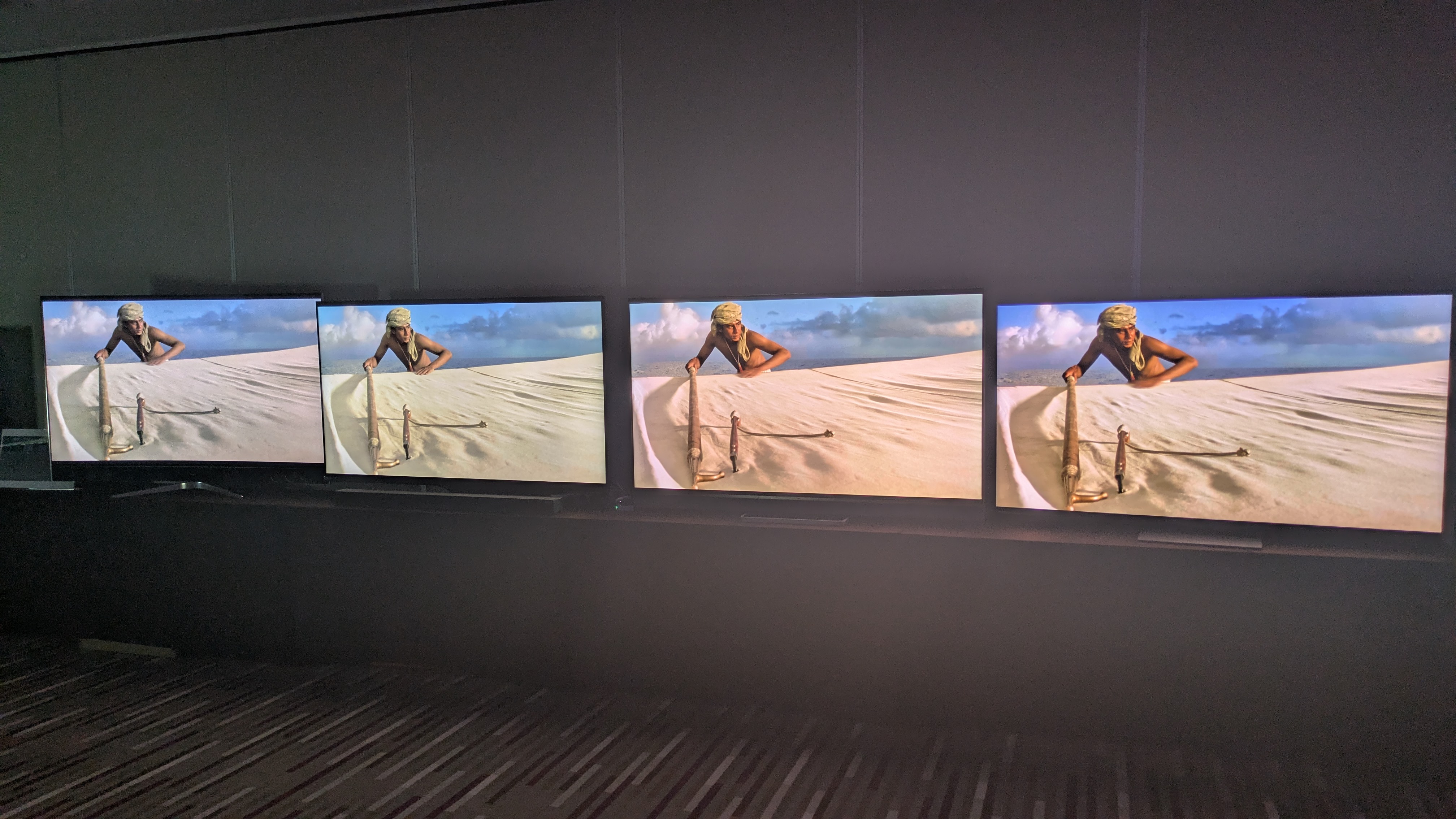
TCL is a major competitor in the TV market, especially in the world of mini-LED TVs. It has been responsible for some of the best TVs over the past few years, including last year’s excellent TCL QM851G in the US and the TCL C855 in the UK.
I recently attended an event showcasing TCL’s 2025 UK and European TVs, including the C-series mini-LED models, which look primed to take on the best mini-LED TVs from Samsung and Hisense. TCL also carried out various tech demos at the event, including one that showed the inner and outer workings of a mini-LED TV.
Three demos caught my eye in particular: one showing the evolution of TCL mini-LED TVs through the years; the deconstructed mini-LED mentioned above; and, lastly, one that revealed how bright or dark the picture can be with shows and movies on streaming services (in this instance, Netflix).
Mini-LED through the years
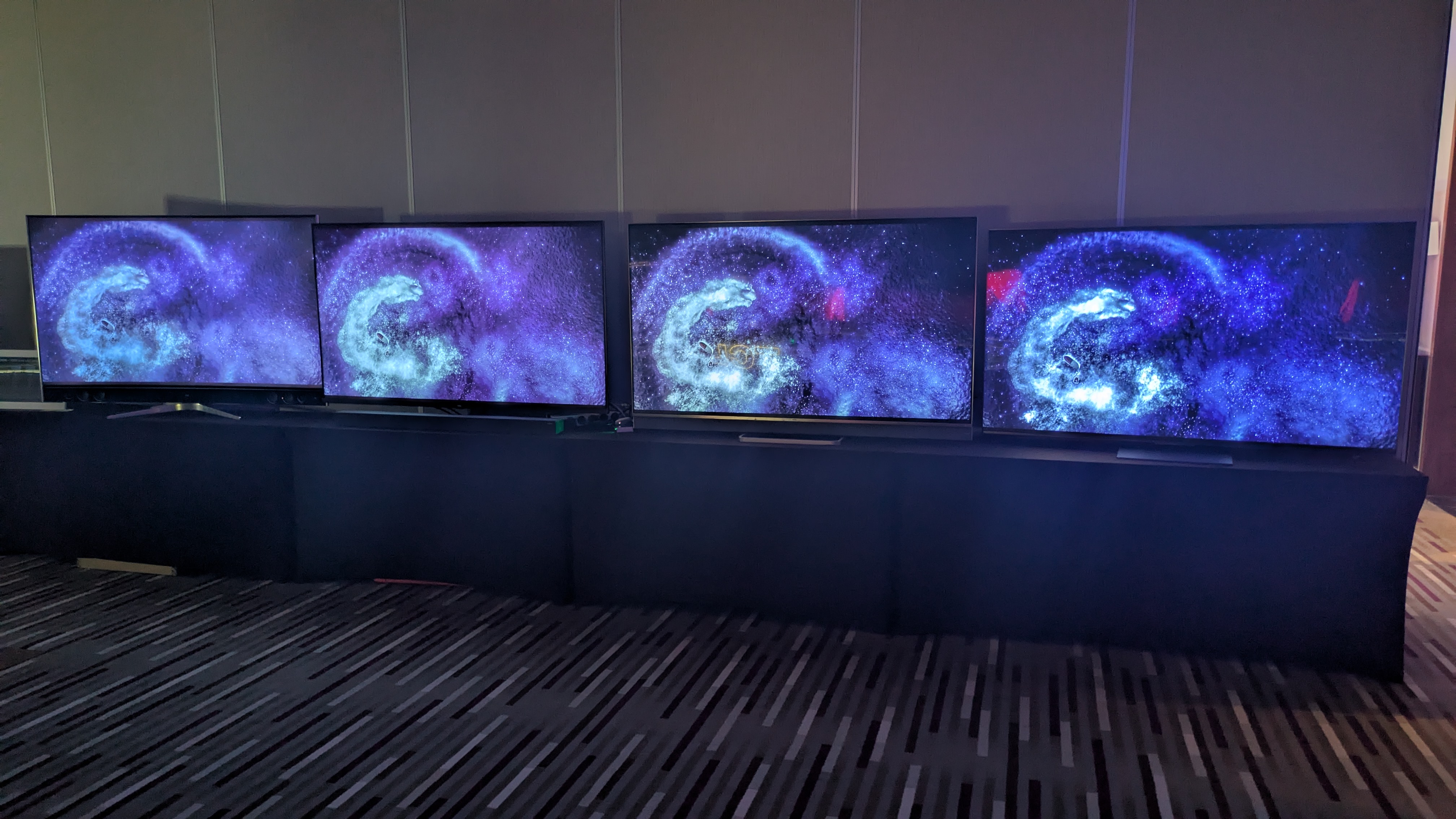
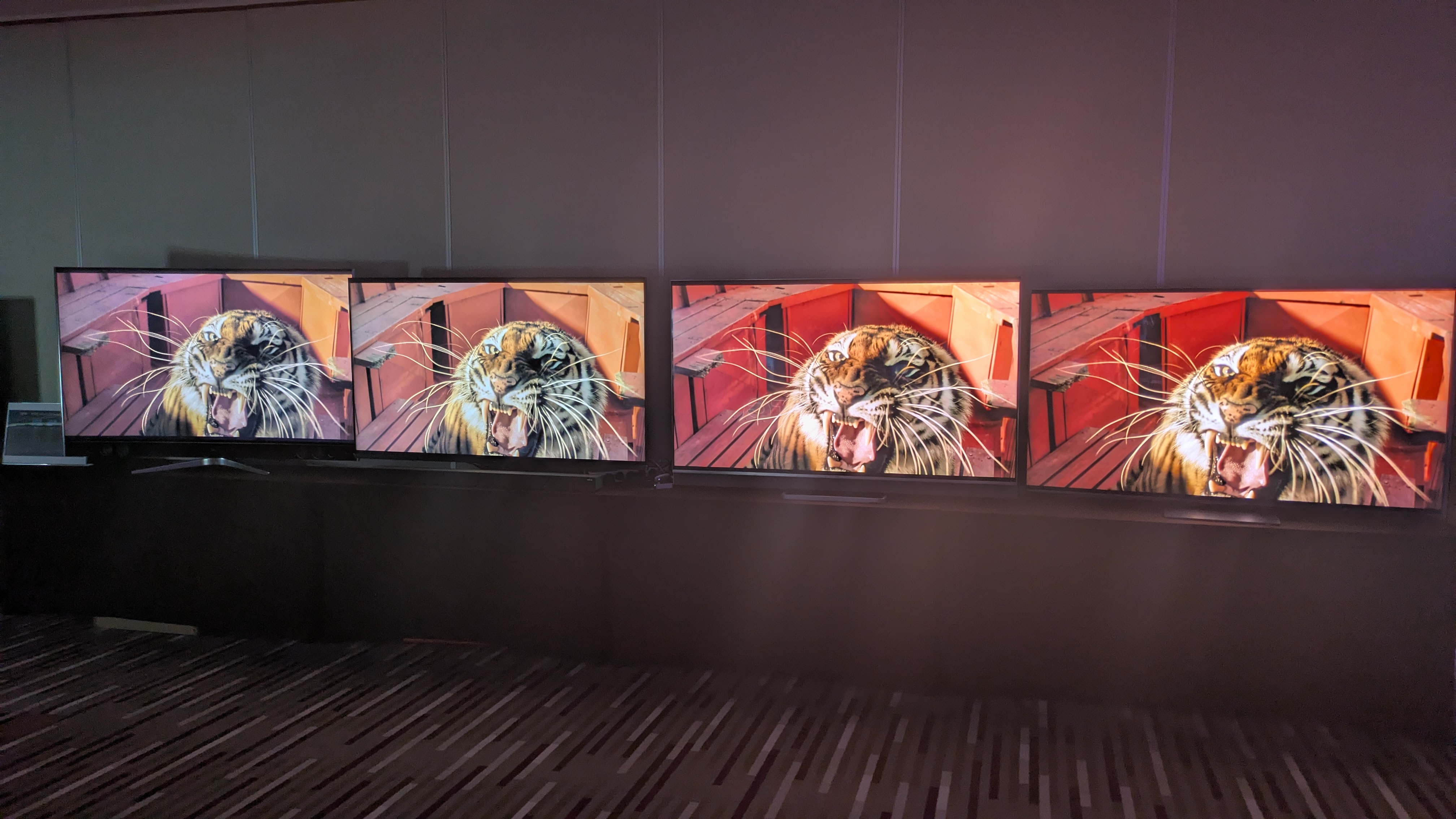
The first demo showed the evolution of mini-LED, specifically 65-inch TCL models from 2016 to 2025. The TVs used were the 65X1 (2016), 65X10 (2019), 65C825 (2020), and the 65C8K (2025).
Over the years, TCL has added more local dimming zones to the backlights of its TVs, starting with 288 on the X1 and ending with 1,680 for the C8K. Seeing these models side-by-side, the picture quality advantage of having more zones was clear.
Watching Life of Pi on the C8K, during a nighttime dream sequence, black levels were rich and contrasted well with the swirling, bright white lights of the spirits, thanks to the TV’s greater number of dimming zones. The X10 was surprisingly the next best, but backlight blooming was more apparent, and shadows took on more of a dark gray tone.
With a daytime sequence in Life of Pi, the C8K showcased the highest brightness and the most accurate color. Once again, the X10 was second, but the C825 fared better here with bolder colors in the tiger’s fur and a stronger perceived depth. Unsurprisingly, the C8K reigned supreme, showing mini-LED’s evolution and how important having more dimming zones can be to picture quality.
Sign up for breaking news, reviews, opinion, top tech deals, and more.
A deconstructed mini-LED TV
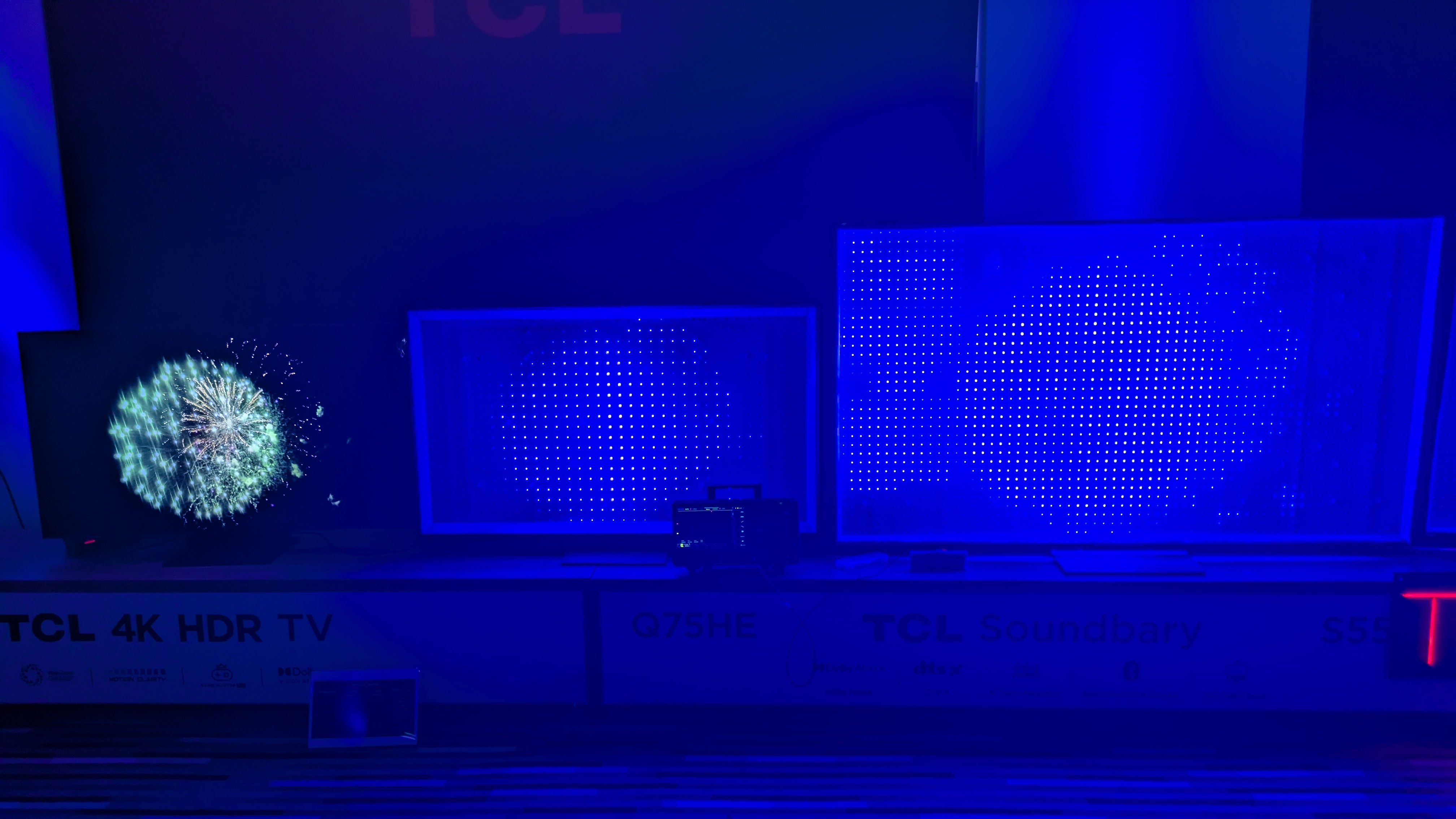
Next up was a demo of the new TCL C-series mini-LED backlight in action, but without a screen to cover it.
With the flagship C8K and mid-range C7K side-by-side, both showing the same fireworks video (also displayed on a ‘master’ screen), the C8K’s backlight demonstrated not only higher brightness but more refined detail and stronger contrast than the C7K, which still looked great.
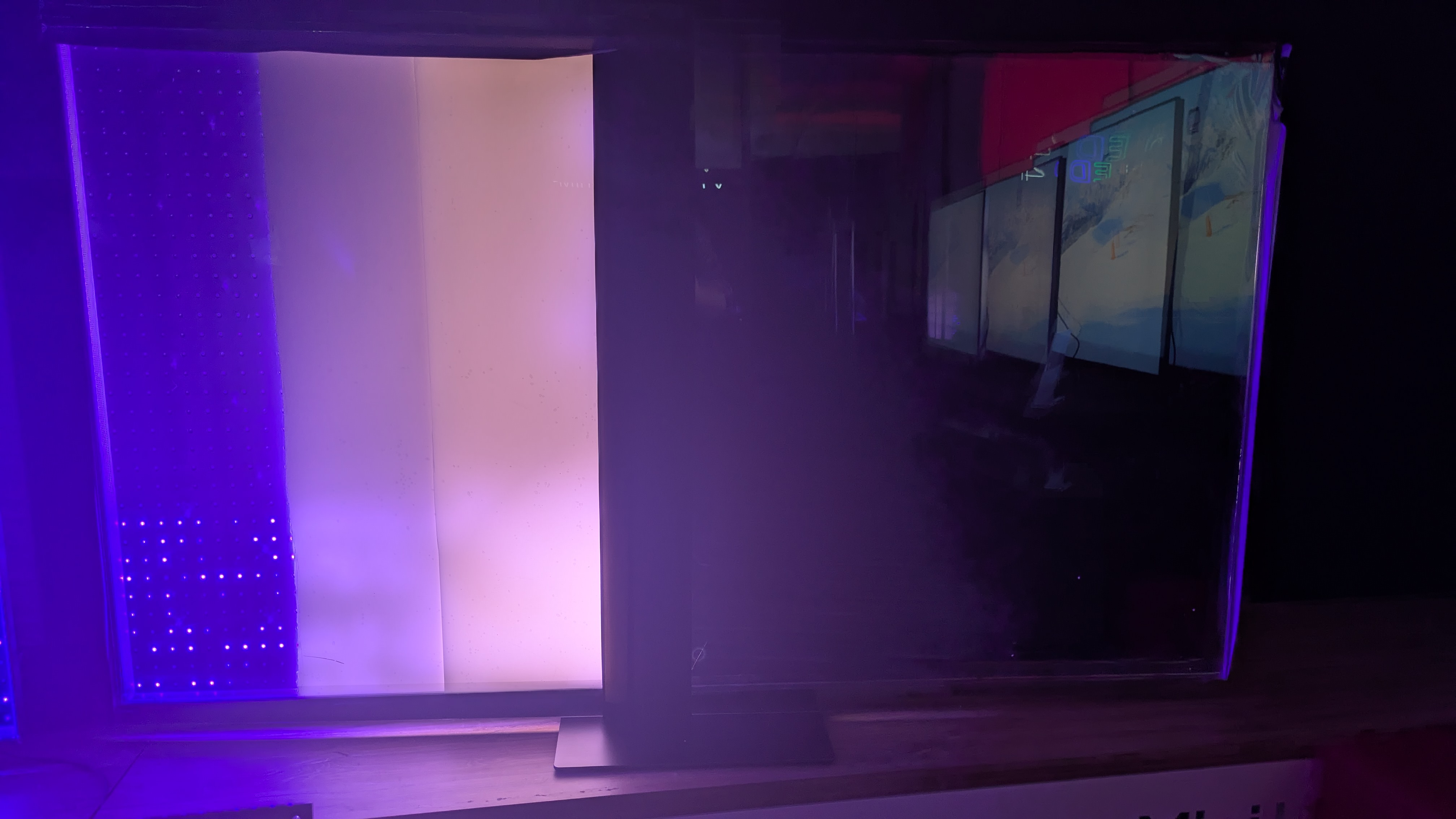
Alongside these TVs was a deconstructed mini-LED TV, which had been cut to show the various layers you’d find in one of TCL’s sets. This included the mini-LED backlight array (the layer on display in the demo) and three other layers, including one for Light Diffusion (for improved uniformity), QDEF (for enhanced colors) and Light Alignment for better brightness efficiency. Finally, there was the panel that we see on top (although this was turned off).
Seeing the panel with its various layers, you could watch the picture taking form as it got further along, adding in the full details as the layers progressed.
Netflix: dimmer than expected
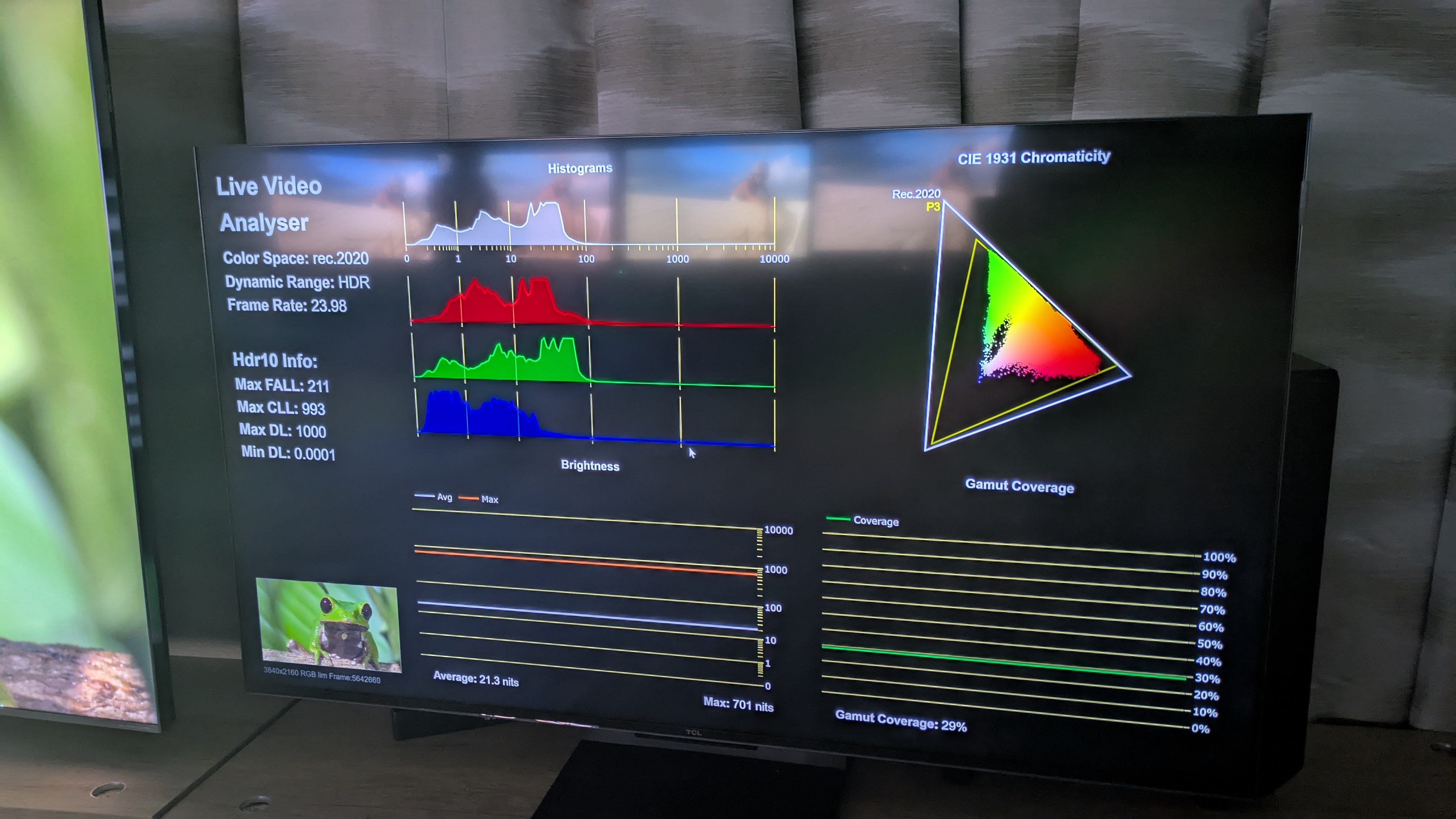
Netflix may be one of the most popular streaming services, but a Netflix 4K stream is the equivalent of a 1080p Blu-ray, at least in terms of bit-rate. (Streaming often averages around 17 Mbps, whereas standard Blu-ray averages around 40 Mbps, and 4K Blu-ray can hit as high as 128 Mbps, giving it superior picture clarity.)
What about brightness?
In TCL’s demo, a Live Video Analyzer was hooked up to a C-series TV, showing not only the color gamut coverage of a Netflix 4K show but also its average and maximum brightness (in nits). Starting with Emily in Paris, the show hit an average of 40 nits throughout one scene. Doesn’t sound very bright, does it? Changing to The Crown, a darkened hallway scene averaged 1 nit. Yes, only 1 nit!
This was the same story when cycling through various movies and TV shows on Netflix: the average brightness was lower than I anticipated. The Cloverfield Paradox had a potential max brightness of 700 nits, but only averaged 17 nits in one particular scene. Planet Earth II also hit similar numbers, despite having a very colorful green frog on screen.
The takeaway? Your TV may be capable of high brightness, but not everything you watch will take advantage of that capability.
You might also like

James is the TV Hardware Staff Writer at TechRadar. Before joining the team, he worked at a major UK based AV retailer selling TV and audio equipment, where he was either telling customers the difference between OLED and QLED or being wowed by watching a PS5 run on the LG 65G2. When not writing about the latest TV tech, James can be found gaming, reading, watching rugby or coming up with another idea for a novel.
You must confirm your public display name before commenting
Please logout and then login again, you will then be prompted to enter your display name.